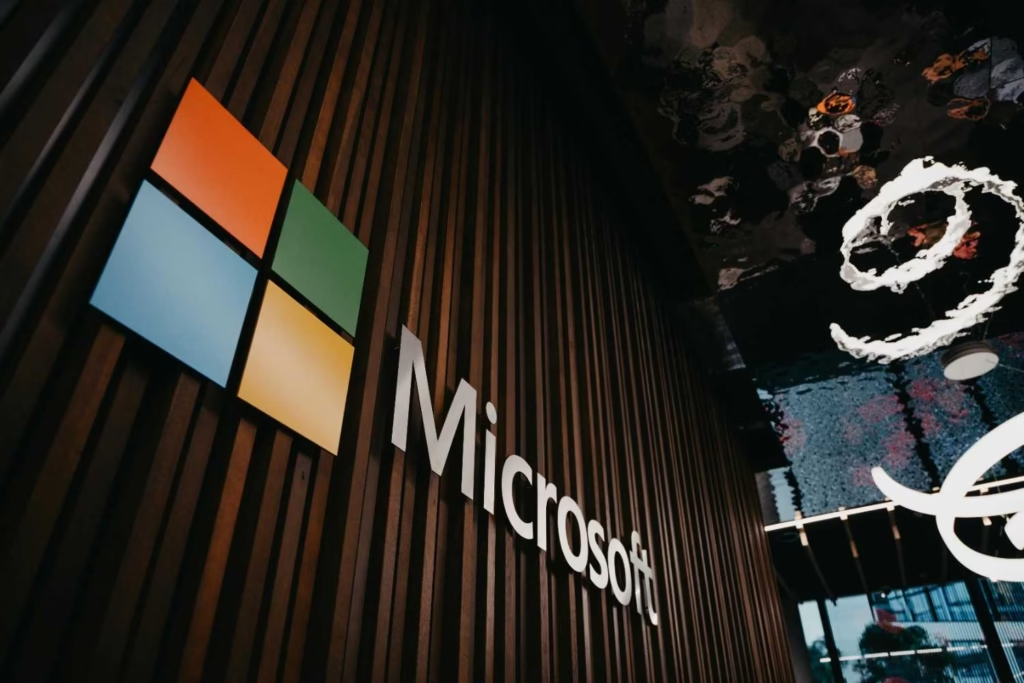Can More Microsoft Jobs Be Replaced by AI in 2025?

Microsoft released a workforce analytics study showing that AI could affect up to 36% of tasks performed by its employees. This raises an important question: Could Microsoft Jobs be Replaced by AI? The study suggests significant automation potential — but it does not imply immediate, widespread layoffs. Instead, it highlights the beginning of role transformation in certain knowledge-based positions.
What this post covers:
- Which roles are most exposed to AI at Microsoft
- Which jobs remain least vulnerable
- What recent layoffs truly signal
- How real and imminent these changes are
For detailed context on previous layoffs, read our blog on AI Replacing Jobs at Microsoft.
Microsoft’s internal research examined 200,000 anonymized Bing Copilot conversations (Jan–Sep 2024), assigning “AI applicability scores” across jobs. The roles with the highest exposure included:
- Translators
- Journalists
- Historians
- Customer service agents
- Sales representatives
On the other hand, roles such as nurses, roofers, and massage therapists showed low vulnerability, underscoring their continued importance.
Layoffs at Microsoft: Restructuring More Than Replacing Roles
In May 2025, Microsoft announced 6,000 layoffs, followed by an additional 9,000 employees in July, totaling 15,000 job eliminations over a few months. These cuts were explicitly tied to the company’s strategic shift toward AI-focused growth and operational efficiency, rather than a sudden, sweeping replacement of workers with machines.
Multiple reports, including those from The Economic Times and Barron’s, emphasized that Microsoft aimed to redistribute talent around AI, not reduce headcount without purpose.
Satya Nadella, Microsoft’s CEO, offered candid insight into the transition:
“This shift is messy, and it’s not about wholesale AI replacement—it’s about rebalancing our workforce to invest in AI, while realigning roles, skills, and cost structures.” — Satya Nadella
His use of the word “messy” underscores that transformation—especially in a company of Microsoft’s scale—is complex and often uncomfortable. It reflects the reality that AI integration involves both job evolution and role refocusing, not the blunt, across-the-board elimination of positions.
4. AI Augments—It Doesn’t Simply Eliminate Roles
Highlighting how AI can make human workers more productive can offer balance:
- An arXiv study analyzing 12 million job postings found that AI increases demand for complementary human skills—like digital literacy, teamwork, and resilience. The boost in demand for these skills is up to 50% stronger than the decline in roles it directly replaces.
- Real-world data shows that when knowledge workers used tools like Microsoft 365 Copilot, they spent 30 minutes less per week reading emails and completed documents 12% faster. The adoption rate among users was high—nearly 40% used it regularly in just six months.
Broader Context: AI Is Changing, Not Ending, Roles
- Task automation affects up to 36%, potentially impacting around 80,000 jobs, but change is gradual.
- Globally, about 27,000 job losses since 2023 have been linked to AI, mainly in junior white-collar roles.
- In Australia, 79% of jobs are deemed low-risk and may instead see AI augmentation.
- Academic studies affirm that AI typically complements human work, boosting the value of ethical, creative, and collaborative skills.
5. FAQs (Microsoft Jobs Be Replaced by AI)
| Question | Answer | Sources |
|---|---|---|
| How many Microsoft jobs could AI impact? | Up to 36% of tasks could be affected—indicating significant but not immediate job displacement. | Business Insider |
| Which Microsoft roles are most exposed to AI? | Roles like translators, customer service agents, journalists, and sales reps are among the most exposed. | Investopedia |
| Are manual roles safer from AI? | Yes—jobs like nursing, roofing, and massage therapy show low AI applicability. | Investopedia |
| Do layoffs mean AI is fully replacing roles? | No—Microsoft’s layoffs reflect AI-related restructuring, not full job replacement. | Barron’s |
| Is AI creating more jobs or cutting them? | While some roles are at risk, AI is creating opportunities in tech, strategy, and governance. | arXiv |
How Employees Can Adapt
Workers at Microsoft—and across AI-impacted industries—can stay relevant by shifting into roles that AI empowers rather than replaces:
- Master AI and Copilot tools: Become proficient in Microsoft AI ecosystems.
- Learn data and ML fundamentals: Roles like AI operations engineer, data analyst, and machine learning specialist are in growing demand.
- Emphasize human-centric skills:
- Creative problem-solving
- Emotional intelligence
- Ethics in AI and AI governance
- Explore new adjacent roles:
- Prompt engineering
- AI safety and alignment
- Policy advising and AI strategy
- AI project management and human–machine collaboration
These strategies are informed by real-world reskilling programs and expert projections.
Conclusion
While AI will inevitably change many roles at Microsoft, it’s driving transformation—not complete displacement. Manual and highly emotional roles remain relatively secure, while new roles focused on AI oversight, design, and strategy are emerging.
What matters most: adaptation. By building future-focused skills and embracing AI tools, employees can stay relevant and valuable in the evolving workplace.
For deeper insights, especially on affected roles in July 2025 and strategies, don’t miss our blog: AI Replacing Jobs at Microsoft.